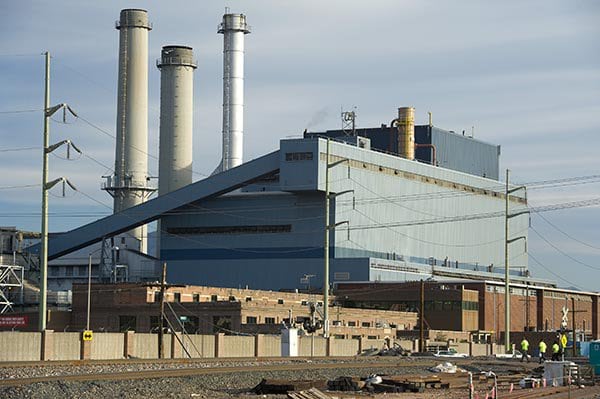Colorado Utility Will Close Last Two Coal Plants
Two coal plants operated by Colorado Springs Utilities (CSU) will close early after the agency’s board voted June 26 to retire the facilities. The move will leave Xcel Energy, Colorado’s largest utility, as the only group still operating coal-fired units in the state after 2030.
The CSU board in a 7-2 vote Friday decided to close the 208-MW Martin Drake Power Plant, one of the last urban-sited coal plants in the U.S., by 2023. The 207-MW Ray Nixon Power Plant in Fountain, about 14 miles south of Colorado Springs, will close by 2030.
“This is a historic decision for the future of our utility and this city,” said Utilities Board Chairwoman Jill Gaebler in a news release following the vote. “It sets us on a path to best support our Energy Vision and its strategic pillars of economics, environment, resiliency and innovation.”
The board has said CSU will integrate more cost-effective renewable energy and non-carbon resources, such as wind and energy storage, into its portfolio to replace the coal-fired generation capacity. Board members have worked with CSU staff for more than a year to develop the utility’s new energy plan, designed to serve the city for the next 30 years.

The utility’s 2020 Electric Resource Plan includes adding 500 MW of wind power generation capacity, 150 MW of solar, and more than 400 MW of battery storage.
Fires at Both Plants
The Martin Drake plant’s two remaining operating units—Units 6 and 7—were built in 1968 and 1974, respectively. A fire at the plant in 2014 caused significant damage, leading to a 10-month shutdown of what was then a three-unit facility. The plant needed $20 million of repairs. A second, smaller fire at the plant last year again brought calls for the facility’s permanent closure.
The CSU board voted in 2015 to decommission the Drake plant no later than 2035; Unit 5, which came online in 1962, was retired at the end of 2016.
The Ray Nixon plant began operating in 1980. It has one coal-fired unit (the 208-MW generator being retired), and two 30-MW natural gas-fired units. A fire occurred in the plant’s coal-handling area in September 2014, but the main power plant was not affected.
Other Colorado Closures
The Platte River Power Authority on June 16 said it will close its last coal-fired unit, the 280-MW Unit 1 at its Rawhide Energy Station near Fort Collins, by 2030—16 years before its scheduled retirement. Tri-State Generation and Transmission earlier this year announced plans to close its Craig coal plant by 2030.
Unit 2 at Craig received a POWER Top Plant award in 2018 for its project to install selective catalytic reduction technology.
Anna McDevitt, senior campaign representative for the Sierra Club’s Beyond Coal Campaign in Colorado, in an email to POWER Friday said, “Xcel was one of the first utilities to make the commitment to 80% carbon-free electricity by 2030, but now it’s the only utility with plans to operate coal plants in Colorado past 2030. Cleaning up the electric sector is essential to meeting Colorado’s greenhouse reduction goals, and the state’s largest utility will need to do its part. After today, all eyes are on Xcel Energy and its Colorado coal plants.“
The coal plants in Colorado that are currently scheduled to operate past 2030 include:
- Comanche 3 (750 MW) in Pueblo: Xcel is majority owner and operator of the largest coal plant in Colorado, and the plant is scheduled to retire in 2070.
- Pawnee (552 MW) in Brush: Xcel is the sole owner and operator, and the plant is scheduled to retire in 2041.
- Hayden 1 (179 MW) and Hayden 2 (262 MW) in Hayden: Xcel owns the majority of Hayden 1 and 37% of Hayden 2. Hayden 1 is scheduled to retire in 2030 and Hayden 2 is scheduled to retire in 2036. Co-owner PacifiCorp has called for Hayden 2 to close by 2030.
Xcel in 2018 made a commitment to reduce carbon emissions 80% by 2030 and 100% by 2050. That move preceded announcements by other utilities in the state that they would retire their coal-fired units after state lawmakers passed the “Climate Action Plan to Reduce Pollution” in 2019. That measure aims to reduce greenhouse gas emissions in the state by 25% by 2026, 50% by 2030, and at least 90% by 2050, based on 2005 emissions levels.
—Darrell Proctor is associate editor for POWER (@DarrellProctor1, @POWERmagazine).